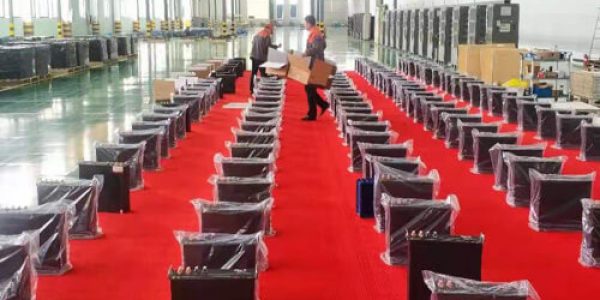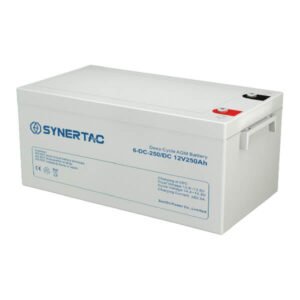Battery Voltage
The first thing to pay attention to is the battery voltage.
The nominal voltage of a single LiFePO4 cell is 3.2V, therefore most 12V battery packs, including our MonoBlock battery, are actually rated at 12.8V. It is still compatible with most chargers, controllers, and inverters.
Only you need to know that there is a difference in voltage between 12V LiFePO4 and 12V lead-acid batteries, to avoid the possibility of non-compatibility with other components.
A single LiFePO4 cell ranges from 2.50V to 3.65V, a 12V pack of 4 cells in series is 10.0V-14.6V, and a 24V pack of 8 cells in series is 20.0V to 29.2V.
Besides, most of the 48V battery packs in the market now are 16S solution. Such as our Modular series, the actual nominal voltage is 51.2V and the voltage range is 40.0V to 58.4V. While some brands are doing 15S solution, the actual nominal voltage is 48V and the operating voltage is 37.5V-54.8V.
Although now most of the devices and appliances are compatible with a wide range of voltage. However, in some specific applications, the battery voltage is still crucial to whether it can be adapted to the involved devices.
Max Charge Current
Charge time is always a concern for users, especially nowadays.
Previously, lead-acid batteries need 8-10 hours or a whole night to charge to full. If changed to lithium batteries, usually 2 hours to charge to over 95%.
The recommended charge current is below 0.5C, and it is not recommended to charge at too high a current. Too high the current will cause the battery to internal overheat, even though the BMS has temperature protection.
If the max charge current of the battery is very small, like 0.1C or under 0.3C, similar to lead-acid batteries, it is not recommended.
Max Discharge Current
The max discharge current of most energy storage LiFePO4 batteries is 1C.
Unlike lead-acid batteries, the BMS will cut the circuit if the current is over the limit due to the BMS overload protection. The disconnection of the circuit will cause inconvenience to the user.
For example, in a home solar system.
If the inverter’s max power is 5kW, then a 51.2V100Ah battery is enough and will not cause a break. If it is a 48V100Ah battery when it reaches the peak power of 5kW, the current is 105A, which is over 1C, it may trigger the current protection of the BMS and cause the battery circuit to be cut off.
Then all the lights will go out, all the appliances, including the refrigerator, the air conditioner will stop working. It is really a very bad experience.
So the battery max power must be more than the inverter max power.
Please note, it’s the maximum power, not the rated power. There are quite a few appliances that have a peak power that is much higher than the rated power.
For example, motor products always have peak power.
Make sure the battery max power is greater than your devices’ max power, it is very important.
Cycle Life
At present, LiFePO4 cells can achieve a cycle life of 6000 cycles and after that, still, maintain 80% of usable capacity. The most recommended working range of SOC is 10% to 90%. But in my opinion, 5% to 95% is good enough.
10 years is a pretty long time. Even one cycle a day, the cycle life is still far more than 10 years of use. The battery use recommendation is, do not drain the battery, leave a little energy left inside (better more than 5%). Don’t leave the battery empty without recharge.
Warranty
The warranty involves the manufacturer’s guarantee and confidence in the quality of the product, which is a very important part of the product service.
Our LiFePO4 batteries are guaranteed for 5 years, if there is any defect, we will replace them for free.
Extra Functions
Extra Functions are options depending on the user and can be added if necessary.
BlueTooth
The Bluetooth function allows users to know more about the internal conditions of their batteries., such as SOC, voltage, temperature, and others.
You can also set the over-charge voltage, over current, and other parameters.
For example, you can set the discharge end voltage to 3.0V, which will keep more energy inside the battery and protect the battery from empty. Or set the charge over-voltage to 3.60V, which will better prevent the battery from overcharging. These operations only reduce a little of the battery energy but make the battery much safer, much better performance, and much longer life.
This function is ideal for those users who like to take control of their battery and have a better vision of their battery conditions.
Self-Heating Function
This function is developed for high latitude or cold areas because lithium batteries are not recommended to be charged below 0℃.
This function allows the internal heating film(s) to heat up the inside of the battery when it is under 0℃. Then the battery can be charged well. Obviously, this function is useless in the areas where the temperature is above 0℃ all year round.
External Battery Meter
The external ammeter display allows the user to directly see the SOC, remaining capacity, voltage, current, power, and also has an alert function. For example, if the battery is below 20%, it will beep to alarm you.







One Response